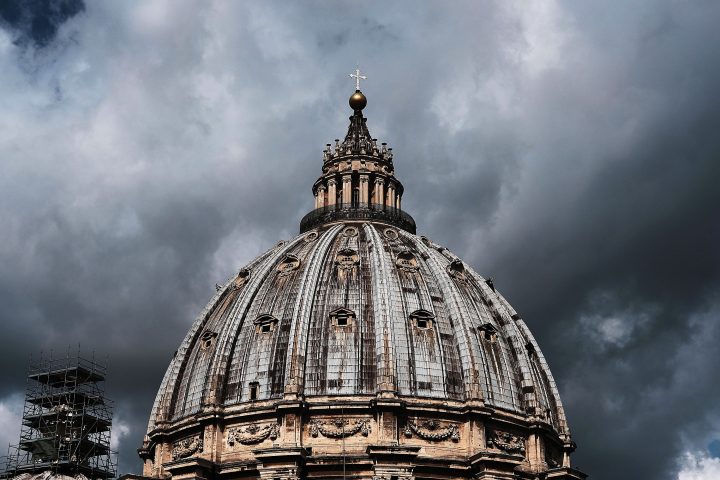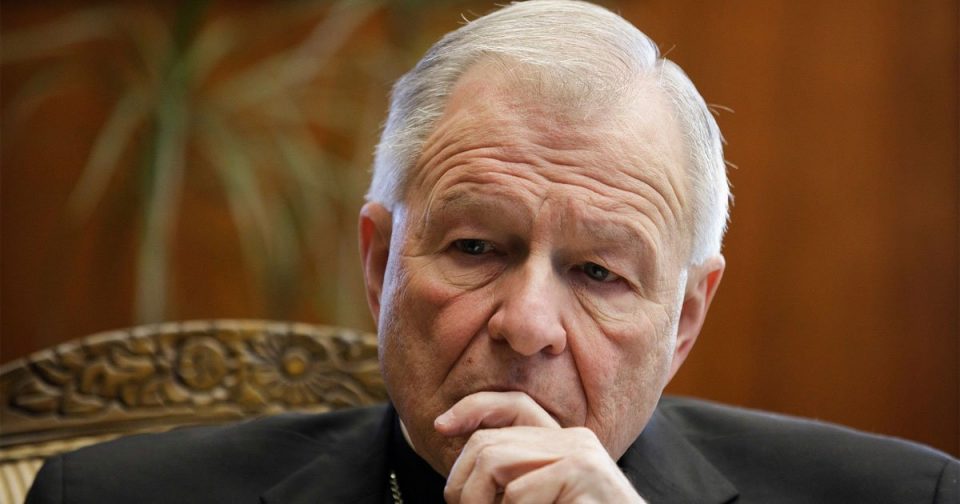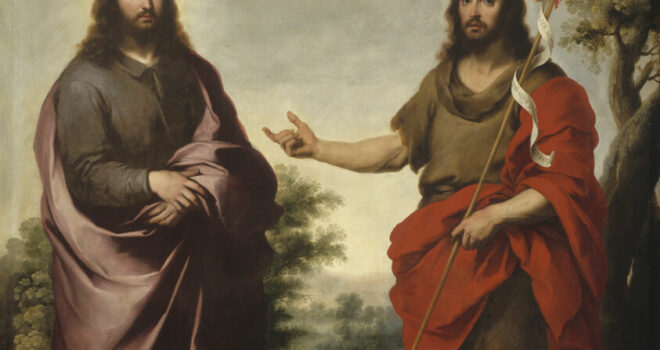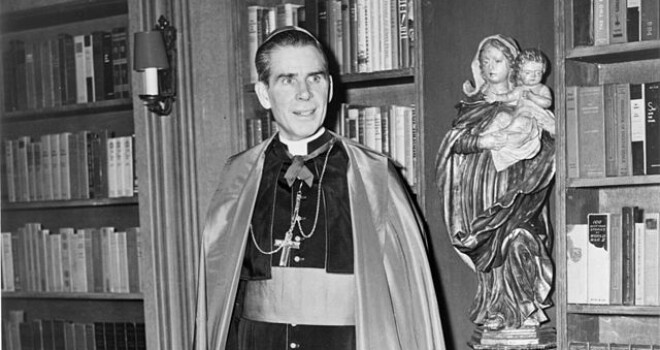By Mary Eberstadt, Weekly Standard, September 17, 2018
Catholic scandals past and present
Sixteen years ago, at the height of the 2002 clergy sex scandals in the Catholic church and on the eve of a meeting of bishops in Dallas, The Weekly Standard published an essay of mine called “The Elephant in the Sacristy.” It included an in-depth look at some of the most notorious clergy abuse cases of the time. Back then, like today, the plain facts of the scandals were submerged in what we now call whataboutism. According to these evasive maneuvers, the wrongdoing was supposedly explained by reference to clericalism, celibacy, sexual immaturity, and other attributes invoked to avoid the obvious. I examined and dismissed those analyses, offered up an alternative, and made several recommendations for cleaning up the Catholic church of the future. The scandals, I wrote, were:
a cluster of facts too enormous to ignore, though many labor mightily to avert their eyes. Call it the elephant in the sacristy. One fact is that the offender was himself molested as a child or adolescent. Another is that some seminaries seem to have had more future molesters among their students than others. A third fact is that this crisis involving minors—this ongoing institutionalized horror—is almost entirely about man-boy sex.
Like most people, I could hardly bear to read what needed to be read about the cases. As well, anyone back then who described the facts in unadorned English was guaranteed vituperation, and got it. But I wrote it anyway because of the conviction that “the most important mission facing the bishops and, indeed, all other Catholics . . . is the responsibility of doing everything in one’s power to prevent this current history, meaning the rape and abuse of innocents by Catholic priests, from ever being repeated.”
That was then. Here we are now.
Seen one way, this moment looks like a catastrophically familiar place, with more clergy sex scandals revealed not only in the United States but around the world. Viewed more widely, though, we are in a far better place than we were 16 years ago.
First, same-sex marriage has triumphed, and ironic though this outcome may be for the Catholic faithful, that victory has removed one of the chief obstacles to truth-telling about the scandals. Yesterday’s secular advocates for same-sex marriage shouted down anyone who suggested that homosexuality had something to do with the abuse, because they feared the connection would harm their political cause. Having prevailed, their attentiveness to the church is now much diminished. Accordingly, and very much unlike yesterday, today the fact that the scandals revolve for the most part around homosexual coercion by older men of younger men and boys is widely acknowledged, even in the secular press.
Second, the Catholic laity, at least in the United States, is in a dramatically different frame of mind following the revelations about former cardinal Theodore McCarrick. In 2002, the laity’s main reaction to the scandals was handwringing and protestations of shock. Within the sadder but wiser laity of 2018, action is being demanded of religious leaders, from individual parishes to St. Peter’s Square. The pewsitters of yesterday asked the clergy to fight for them by cleaning up the church. Today, they are fighting for a holier church themselves.
Third, the same information tsunami swamping the world with pornography and cat videos is also working an unexpected miracle for the church: It has made the scandals inescapable and undeniable. The Internet has empowered the laity to connect factual dots and share information. It’s been suggested by Cardinal Blase Cupich of Chicago that for the sake of the church’s broader mission, Catholics should not go down the “rabbit hole” of accusations. To the contrary. Every rabbit hole needs inspection in order to see what’s hiding in it. We need tools, workers, and light.
The first area of improvement concerns the language we use in speaking about the scandals. If we’re going to clean up the church, we must first sharpen the vocabulary that we use to chip away the dirt.
What’s more obvious now than 16 years ago, for example, is that anyone who cares about accuracy should use the word gaywith the greatest caution, if at all. There may be instances when gay is unavoidable as an adjective, a necessary shorthand. But as a noun, it is a word that Christians qua Christians should avoid.
Why? The label is spiritually vague and antagonizes people unnecessarily. The phrase “gays in the priesthood,” for example, fails to distinguish between those who remain celibate and those who do not. It also inadvertently gives rise to the incorrect accusation, “You’re saying all gays are pedophiles!” which no one is claiming. In the interest of removing unnecessary red flags wherever possible, we shouldn’t use it.
The word gay and related terms like LGBTQ should be avoided for a deeper reason. They are insufficiently respectful of the human beings who are described in this way. Such identifiers sell humanity short by suggesting that sexual desire amounts to the most important fact about an individual. However well-intentioned (or not), these terms advance a reductionist view of men and women incommensurate with the reality that we are infinitely rich and complicated beings, created in the image of God.
It is bad enough when the wider culture, interested in exploiting carnal desires for commercial or prurient reasons, objectifies human beings in this way. When religious authorities do the same, the damage is worse. I’m reminded of Fr. Arne Panula, a prominent Washington, D.C., priest of manifest goodness and wisdom who died last year. In one of our last conversations, he mentioned meeting a friend-of-a-friend in Italy. This friend felt compelled to tell him, “Fr. Arne, I’m gay.” To which the priest replied, “No, you’re not. You’re a child of God.” Fr. Arne was making the point that the most important fact about this man was not his erotic leanings.
Another word that continues to cloud rather than illuminate is homophobe, and its related variants, homophobia and homophobic. Inside parts of the church, and ubiquitously outside it, homophobe has become an automatic smear deployed for partisan purposes. We see this clearly by observing that related teachings of the church are not similarly made into epithets. Do people speak of contracept-ophobes, to criticize church teaching against contraception? Do they decry klepto-phobes or forni-phobes?
The fact that those other words aren’t in circulation shows that homophobe is meant to shame, intimidate, and sideline apologists for the magisterium. Homophobe, like gay, has become a political term, not a spiritual one. It’s an epithet, not an argument.
Words are never a matter of indifference. As Aleksandr Solzhenitsyn insisted, we aren’t obliged to participate or even to acquiesce in false accounts of reality. If we can’t speak clearly and plainly, we can’t think clearly and plainly. And if we can’t think clearly and plainly, we will never be able to reduce the damage being done in the house of God by the pachyderm trying to wreck it from within.
Some critics might object that people should call themselves whatever they like; what’s the harm in using this noun or that one? But as Daniel Mattson argued in Why I Don’t Call Myself Gay, identities and proclivities are different, and efforts to prove that sexuality belongs in the former category are problematic. Taken to its logical conclusion, labeling ourselves whatever we like can be subversive of reality itself. We have to start calling things by their proper names, beginning with refusing to participate in the dominant ideology of secularism, which celebrates what the catechism calls sin and reduces the human person to evanescent erotic desires in defiance of Christian teaching.
Afurther aspect of the scandals both past and present also concerns language. Just as unthinking use of phrases imported from secular postmodernism has obfuscated rather than clarified reality within the church, so has the resort to the language of therapy.
Today’s throwback invocations of the supposedly scientific distinctions between pedophile and ephebophile are empirically problematic. Such categorization may indeed be useful for some purposes—like designing criminal sentences. But as descriptions of what the clergy scandals have actually been about, they misrepresent reality. These priests are abusers, and often polymorphous abusers at that.
Consider the notorious case explored at length in the opening of Jason Berry’s groundbreaking book, Lead Us Not into Temptation (1992). Berry documented the offenses of Fr. Gilbert Gauthe of Louisiana, who was sentenced to 20 years in prison for the rape and sexual abuse of more than three dozen boys ranging in age from 7 to 15. Other prominent offenders, such as Fr. Paul Shanley of Massachusetts, whose indiscriminate predation was documented in detail by Maureen Orth for Vanity Fair, also abused young children and teenagers. As I noted 16 years ago, Shanley was “no textbook pedophile or ephebophile, but rather a sexually active gay man with a taste for children and adolescents too.”

Fabrice Coffrini / AFP / Getty
In addition to sharpening language, the Catholic left now needs to learn a lesson that was learned by the Catholic right during the last round of scandals. -Truth-telling isn’t, or shouldn’t be, a partisan game. Reluctance to acknowledge whistleblowers has been an impediment to understanding and thwarting the scandals for many years. This was true in 2002. It remains true in the -mirror-opposite way today.
Sixteen years ago, tradition-minded Catholics lagged behind their more progressive brethren in grasping the lethality of the scandals exposed in 2001 and 2002. Many of the faithful were disinclined to believe the terrible revelations and so wrote them off as a partisan plot aimed at harming the church. Today, by contrast, it is impossible for people acting in good faith to see the scandals for anything but what they are: evidence that parts of the church have become safe spaces for abusers and their apologists.
Another reason for the failure of some to speak out is the result of whataboutism. Whenever tradition-minded Catholics pointed out the homosexual nature of the majority of the priest scandals, their progressive counterparts would counter, “What about your defense of super-predator and Legion of Christ founder Marcial Maciel?” The disgraced priest was regarded as one of the best fundraisers for the church.
Like McCarrick, Maciel was undoubtedly given a pass by some because of his financial acumen, including within the Vatican. This compromised legacy offers Catholics a warning going forward: Know where the money is coming from when it comes your way; know who’s dispensing it; and know that accepting it in ignorance can be a great liability and cause of further scandal.
Finally, most sources of the original reporting on the scandals decades ago were outside traditionalist circles, and so (wrongly, in my view) those traditionalists discounted them—until the resignation of Boston’s Cardinal Bernard Law made the scandals into front-page news impossible to avoid.
They should have been acknowledged in full before that, because the investigations were revealing the truth. Important work was being done in the National Catholic Reporter; in Jason Berry’s groundbreaking research; in the work of the Boston Globe’s reporting team (later made famous in the movie Spotlight); and elsewhere on what’s sometimes called the Catholic left. The evil being revealed was also grasped in full by the late priest Andrew Greeley, another bête noire of traditionalists; he repeatedly drew attention to the scandals, which he called “perhaps the most serious crisis Catholicism has faced since the Reformation.”
The essential elements of priestly abuse were also called out by these same observers. “Blatantly active homosexual priests are appointed, transferred and promoted. Lavender rectories and seminaries are tolerated. National networks of active homosexual priests (many of them church administrators) are tolerated,” Greeley wrote in 1989. The next year he urged the archdiocese of Chicago to “clean out the pedophiles, break up the active gay cliques, tighten up the seminary and restore the good name of the priesthood.”
A similar evasion of reality is afoot today—but in ideological reverse. Rod Dreher’s exhaustive exposures in the pages of the American Conservative are a gift to the church that keeps on giving; he deserves a Pulitzer. Yet his investigations are insufficiently attended to by Catholics and others who stop reading at the word conservative. The same goes for the investigative labors of Catholic News Agency and other sources outside liberal circles that are consistently delivering new information about the scandals.
Today the moral coin is flipped: It is the antagonists of tradition-leaning Catholics who are trying to look the other way and carry on against overwhelming evidence that there’s nothing to see here.
They’ve also put new slurs into circulation. Some of the people uncovering the truth have been disparaged as haters, for example, including by Fr. Antonio Spadaro, who is presumed by many to speak for the pope. Haters, like homophobe, is an epithet imported from the antinomian secular political culture. Its suggestion that some people are beyond redemption is profoundly un-Christian. It should never be used by anyone in religious authority.
Another slur is even worse than haters. Many agonized Catholics desiring only to know whether allegations are true are now accused of participating in religious treason—of planning a “putsch” within the church, as Michael Sean Winters has put it in the National Catholic Reporter. Or consider some characterizations of the testimony of Archbishop Carlo Maria Viganò, former nuncio to the United States and author of a historically unprecedented and detailed 11-page letter released last month, accusing the pope and others of covering up abuse. Theologian Massimo Faggioli has called the work a “coup operation.” Fr. James Martin has tweeted similarly of a “coordinated attack” intended to “delegitimize” the pope.
This list could go on and on. Such martial language is designed to marginalize and malign anyone interested in the veracity of Viganò’s claims. It also sends the terrible signal that some churchmen and theologians underestimate the sufferings caused by unchecked abusers hiding behind Roman collars. The increasingly hysterical insistence that all will be well if only everyone leaves the pope alone underestimates the intelligence of the laity. Anyone who has read Viganò’s letter knows that the testimonial isn’t some anonymous comment tossed into cyberspace but a series of intricate assertions about who knew what and when—all of which can be verified or not in the long run. That bishops and others in authority have testified to the credibility of its author makes the document even harder to discredit, let alone ignore.
Partisan attempts to deflect attention from both the Viganò report and the scandals are jeopardizing the integrity of the church. In the absence of answers to the charges of coverup, who could blame mothers and fathers newly fearful for their children for withdrawing from the pews? So far as the laity is concerned, and contra what curia-firsters seem to understand, there is nothing Rome needs to do more than address these scandals.
What can be done?
First, clerical leaders around the world who do believe in a hereafter must avoid further scandalizing the remaining faithful. They must grasp that just as the scandals themselves have become an engine of secularization, so too has the refusal to address them.
In the past two months alone, additions to what the faithful now know have included but not been limited to: the revelations and ongoing accusations about McCarrick; the Pennsylvania attorney general’s report; the announcement of new investigations by New York, New Jersey, and a lengthening list of other states; and the ongoing revelations of seminarian abuse by religious superiors in various countries. To that ledger could be added the recent departure amid sex-abuse accusations of an auxiliary bishop in Chile, who served under one cardinal living in Rome, and the recent news of more than 3,600 victims of abuse by clergy over many decades in the Catholic church
in Germany.
Second, as many have noted since the news about McCarrick first broke, the church needs more spotlights, not fewer. Toward that end, investigators might do something that has not yet been done. They might consider as possible sources of information the offenders, jailed and otherwise, who might now want to clear their consciences by sharing what they know about these groups of abusers.
For as the Pennsylvania report and other sources confirm, the problem is not only one of individuals, but of networks. Those who have been caught and punished presumably know them well. That fact has yet to be exploited in full by anyone, either in the church or outside it. Both law enforcement and journalists might benefit from connecting dots that perpetrators can provide them. Of course, such testimonies call forth caution in the determination of their truth. But they could be as useful to the church of the future as other examples of “turned” evidence are to law enforcement.
Finally, changes in church law might also help to rebuild the sacristy. As canon lawyer J.D. Flynn writes, “the most likely long-term outcome of this summer of scandal is a universalized protocol for handling allegations of clerical sexual misconduct or abuse involving adults.” I am not a canon lawyer. But I would submit, based on what was known 16 years ago, as well as on the revelations since, that another area of canon law may be relevant to the church of the future as well.
Canon 1025.2 says that a man is only to be ordained if, in the judgment of his religious superior, he will be useful for the ministry of the Church.
Nothing is less useful to the ministry than preying on the young. Individual cases and secular studies have shown that childhood sexual abuse increases the risk of becoming an abuser. Whether that causal connection rises to the level of a “perpetual impediment” to ordination, to use the language of Canon 1040, is for lawyers to decide. For the rest of us, it is enough to know that if seminaries had screened for a history of childhood sexual abuse, the ledger of the past several decades might have been radically different.

Frederic J. Brown / AFP / Getty







